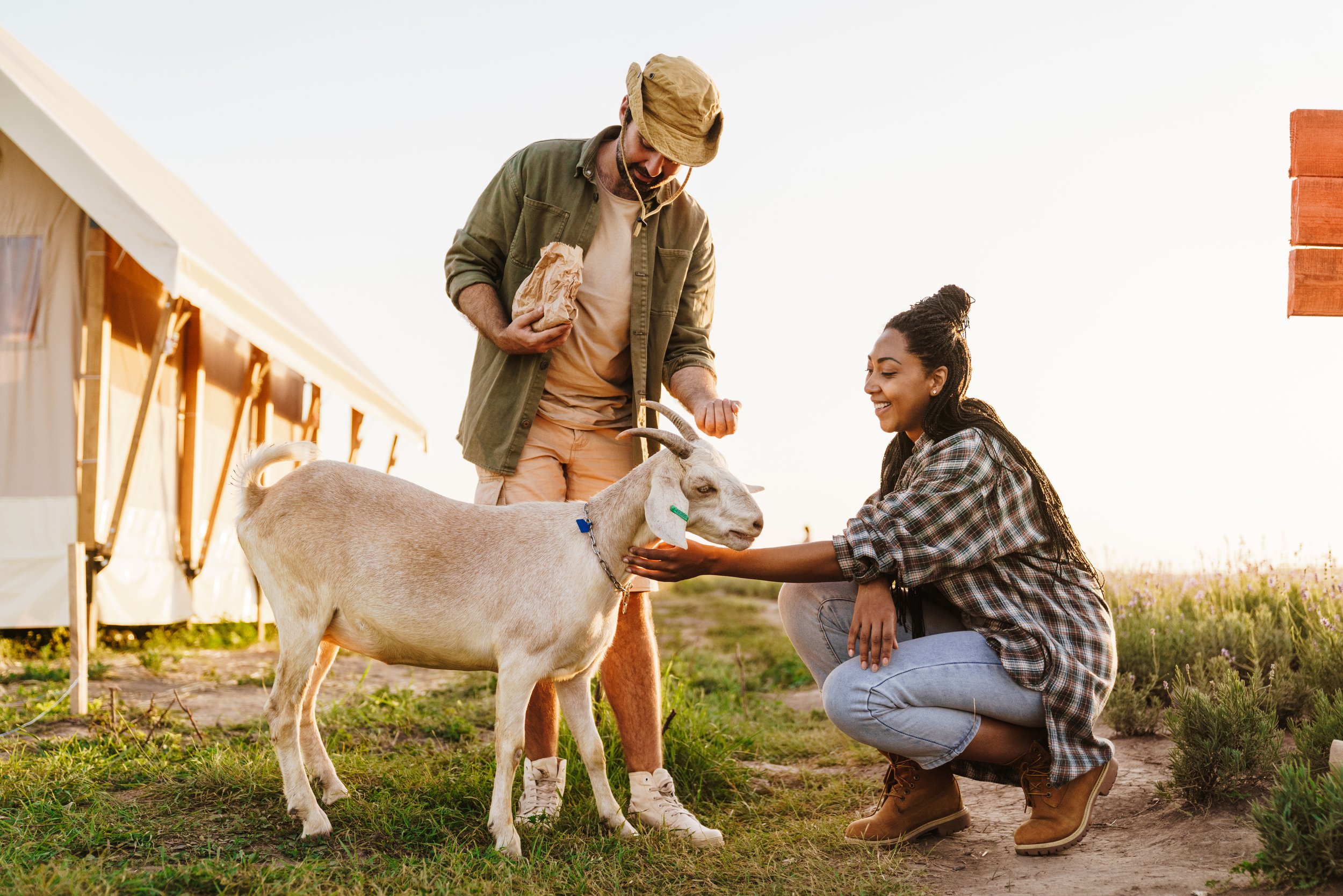Current Projects
Playful Teasing
We’re exploring the origins of humor by studying playful teasing in apes, children, and other animals. Teasing provides a rich opportunity to study what teasers and targets understand about others’ intentions, reactions, and social bonds. This project is funded by the Templeton World Charity Foundation.
Selected work:
Laumer, I. B., Winkler, S. L., Rossano, F., & Cartmill, E. A. (2024). Spontaneous playful teasing in four great ape species. Proceedings of the Royal Society B, 291(2016), 20232345.
Eckert, J., Winkler, S. L., & Cartmill, E. A. (2020). Just kidding: the evolutionary roots of playful teasing. Biology letters, 16(9), 20200370.
Animal Joy
We’re interested in the ways animals express positive emotions and the effects these emotions have on the ways animals learn, socialize, and cooperate. We are collaborating with biologists, psychologists, and philosophers in the US, UK, EU, and New Zealand to develop new techniques for studying joy across a wide range of species. This project is funded by the Templeton World Charity Foundation.
Selected work:
Nelson, X. J., Taylor, A. H., Cartmill, E. A., Lyn, H., Robinson, L. M., Janik, V., & Allen, C. (2023). Joyful by nature: approaches to investigate the evolution and function of joy in non‐human animals. Biological Reviews, 98(5), 1548-1563.
Winkler, S., Laumer, I., & Cartmill, E. A. (in preparation) Bonobos behave optimistically after hearing laughter.
Roots of Gesture
Gesture is a robust part of human language, and plays an even larger role in early childhood. But why do we gesture? Does it primarily help us communicate with others or organize our own thoughts? The gestures of other great apes are flexible, intentional, and often complex. Could human language have started first as gesture? Using a range of observational and experimental approaches, we study when and how people and other apes gesture and what impact it has on communication, thought, and learning.
Selected work:
Zhang, I., Izad, T., & Cartmill, E. A. (2024). Embodying Similarity and Difference: The Effect of Listing and Contrasting Gestures During US Political Speech. Cognitive Science, 48(3), e13428.
Cartmill, E. A. (2023). Overcoming bias in the comparison of human language and animal communication. Proceedings of the National Academy of Sciences, 120(47), e2218799120.
Cartmill, E. A., & Hobaiter, C. (2019). Developmental perspectives on primate gesture: 100 years in the making. Animal Cognition, 22, 453-459.
Cartmill, E. A., Rissman, L., Novack, M. A., & Goldin-Meadow, S. (2017). The development of iconicity in children’s co-speech gesture and homesign. Language, Interaction and Acquisition, 8(1), 42-68.
Virtual Tool Use
Why are humans so good at using tools? Does our reasoning differ in meaningful ways from other tool-using species? We’re collaborating with Planckendael Zoo and Josh Tenebaum’s Computational Cognitive Science Group at MIT to investigate and model the cognitive mechanisms underlying tool use in non-human great apes using a virtual tool use game. This project is funded by the Templeton World Charity Foundation.
Dog Minds in Action (DOGMA)
Dogs have evolved alongside humans for tens of thousands of years. They have been selected for their sociality and their ability to interpret our behavior. We are studying dogs’ ability to read cues and emotions in humans and other dogs. We are also conducting studies on emotional experience and expression in dogs with the goal of better understanding self-regulation and treating problems like separation anxiety.
Public Science About Animals
We are conducting studies and outreach with people around the world to study the minds and behaviors of animals. We’ve collected data on pets, farm animals, and wild animals. Learn more about our public science projects and sign-up to participate HERE.





